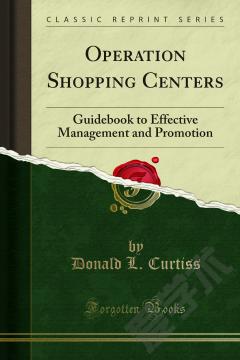Operation Shopping Centers —— Guidebook to Effective Management and Promotion
-----
Traces the evolution of the shopping center retailing concept to match the needs of suburban residential growth — the advent of planned communities — the de centralization of industry and attendant shifts in population — importance of new freeways and arterial highways and the changed pattern of living brought about by the increasing dependence on passenger cars for transportation — the importance of women drivers on the changes in shopping habits — the most desirable store locations for consumers — effect of suburban bus 'systems on shopping habits station wagon living and the growth of the two-car families. The professional services of a specialized field of shopping center market analysts have come into being — experts can now forecast potential retail sales in terms of consumer needs — their part in determining the right location for shopping cen ters — indications of future development to meet increase in family growth.
{{comment.content}}








 京公网安备 11010802027623号
京公网安备 11010802027623号